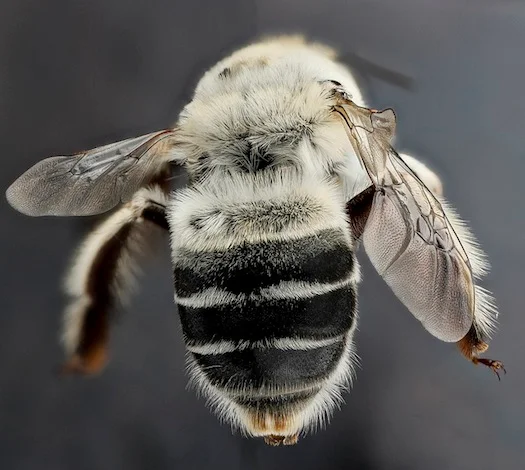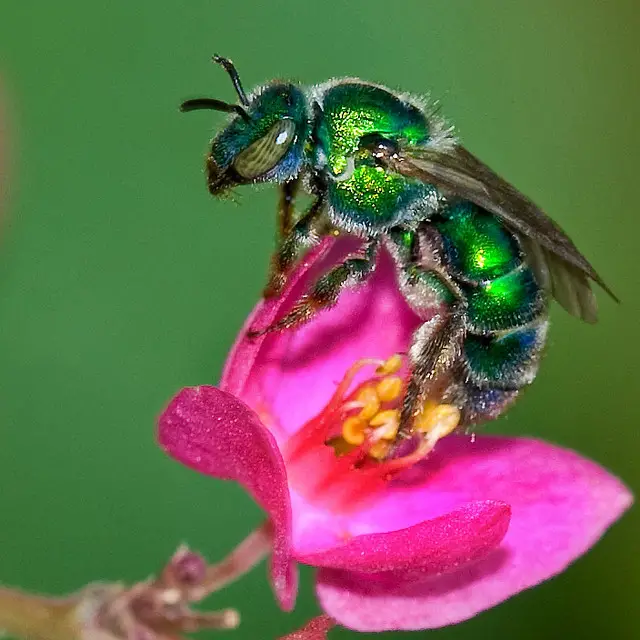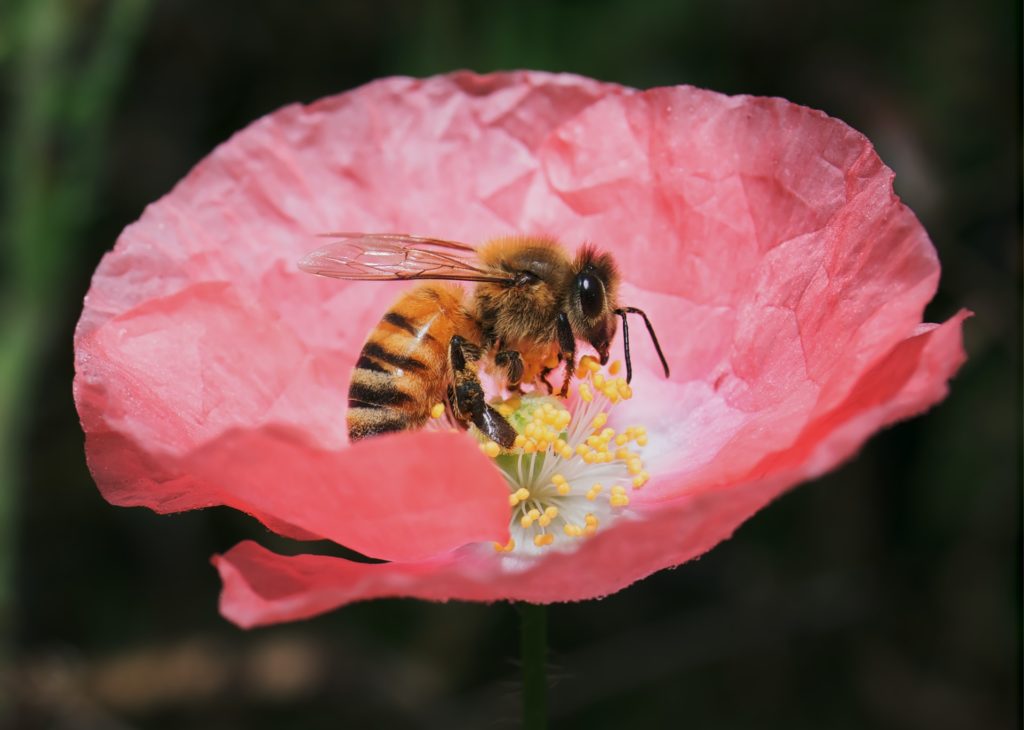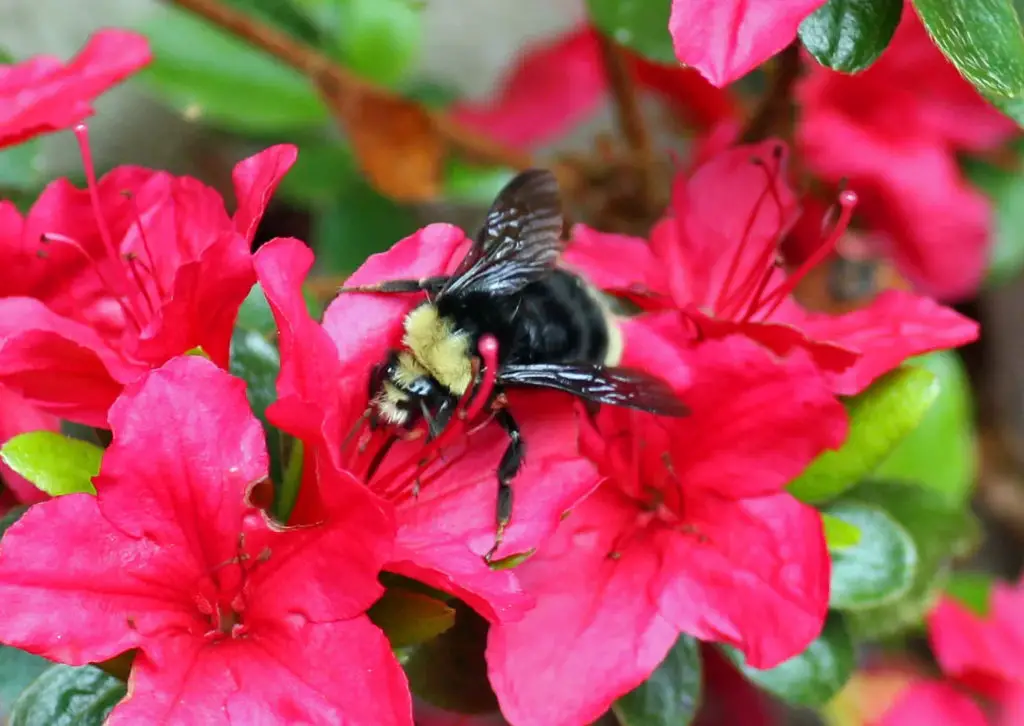Affiliate Disclaimer - As an Amazon Associate I earn from qualifying purchases.
It supports the website. So, Thank you
Bees, regardless of their type, all have a very distinct appearance. They’re also similar in appearance to other flying insects including wasps and hornets. But have you ever wondered why are bees black and yellow?
Bees have those black and yellow stripes as a form of defence. While these creatures can (and will) sting, they typically use this as their last form of defence. Colored stripes tell predators to keep away and act as a warning.
But what’s truly fascinating is that bees aren’t actually true black and yellow. Most would refer to them as being this color but when you look closely, you’ll see that honey bees have more brown and amber coloration.
In this article, we’d like to look at the true color of bees and how this helps them in their fight for survival.
Table of Contents
Why Are Bees Black And Yellow?
Bees have colored stripes as a protective measure. These creatures could become a meal for a lot of other animals like birds and rodents. However, they’ll do what they need to survive, including stinging. But when honey bees sting, they die. And it’s a pretty horrific death.
So to avoid this, bees have evolved their stripes as a way of saying to predators ‘DON’T EAT ME!’ It seems to work for the most part and what’s really interesting is that many predators have also evolved a fear of stripes.
If a predator did try to attack a bee, they’d soon learn that it wasn’t worth the pain and would be unlikely to try it again. Having this feature could make bees safer as they go about their working day.
However, recent research has shown that the stripes alone might not be enough to keep predators at bay. According to the BBC, other bee behavior such as buzzing and the way the bee moves may also play an important role in keeping the creature safe from predators. Of course, the stripes certainly help!
The True Color Of Bees
Did you know that pretty much every bee is a different color? When we say that they’re black and yellow, this isn’t exactly correct. In fact, if you take a look at bee species from around the world, you’ll see that they’re much more ‘rainbow’ than you may have first imagined.
White Bees
There are a couple of bee species that are white including the halictidae white banded bee and the white leaf cutter bee. These all fall into the anthophora compactula species and are most commonly found in Texas. However, these aren’t friendly bees and are known for their unsocial behavior so it’s best to let them get on with things without disturbing them.

Green Bees
It’s not very often you’ll notice a green bee as their coloration means that they blend in with the surrounding foliage. However, there are a lot of them and some species are very beautiful. These include the peacock carpenter bee and the honey-bellied sweat bee.

Purple Bees
When you think about bees, you probably wouldn’t think of the color purple and we wouldn’t be surprised since purple bees are incredibly uncommon. You might even call them rare; but they are out there.
Violet carpenter bees can be spotted and if you see one then you can mark it off your ‘lesser-spotted’ list. These wonderful creatures are not at all aggressive and rarely attack unless they feel very threatened. But what’s interesting is that the males don’t have a stinger.

Blue Bees
You might not immediately think of blue as being a common color for bees but it’s probably a lot more common than you first thought. In fact, there are several species of blue bee including the blue carpenter bee, the neon cuckoo bee and the blue orchard mason bee, among others.
In fact, in North America alone, it is thought that there are more than 140 species of blue bees so it’s worth keeping your eyes open for them.

Brown Bees
Most of the bees that you would call black and yellow are actually brown with amber or orange stripes. Of course, it really depends on the species as some bees have brighter and more vivid coloration than others.
Where brown bees are concerned, the most spotted species in the USA are the common brown carder bee and the hairy-footed flower bee. However, with the latter, note that only the males have a brown coloration. The females are actually black, but more on that later!
Yellow Bees
Now we really get down to business because most people would associate bees with being yellow. And this isn’t surprising since there are a lot of species that come in this color. Again, the colors may be brighter or duller depending on the bee but some of the most common yellow bees are the honey bee, the bumble bee and the yellow-faced bee.
The common honey bee is actually native to Europe and Africa but they have spread across the world and are found almost globally.

Gray Bees
Gray bees? That sounds a little odd, right? But they’re not all that much different to the white bees we talked about earlier. The main difference between white and gray bees is the color of their hairs but it might take a closer look to determine this.
The most common types of gray bees are the ashy mining bee and the shrill carder bee.

Black Bees
With a lot of bee species, it is the female that has a black coloration. Earlier, we talked about the hairy-footed flower bee. With these bees, the males are brown but the females are black. In some cases, females can be completely black so may not look like a bee at all. Although some do have markings.
Red Bees
There are some red bees whose markings are so bright that they are hard to miss. However, there are other red bees that look more brown or orange so you have to look a little closer.
What’s funny about red bees is that the bees themselves are unable to see the red markings on their hive mates. This is because bees are only able to see UV light which is green and blue.
If you’re on the hunt for a red bee then you’ll want to look for the red-tailed black bumble bee or the red mason bee.

Spotted Bees
When you think of bees, you would normally imagine a striped creature and it’s true that this is the case, most of the time.
There are some bees that are just a single color while others have markings that include spots. Some of the most common spotted bee species are two spotted bees and the wool carder bee.

What Affects The Color Of Bees?
Not all bees are the same, even within the same hive there are lots of different colors. If you own a beehive, take a closer look and you’ll see this quite clearly.
The reason for this is that the appearance of the bees will depend on which drones the queen has mated with. The characteristics of her offspring will be influenced by the male so if he has very light, dull markings, this would be the case for the young. On the other hand, some drones within the colony might have very bright, distinct markings which they would pass onto their young. Since the queen will mate with many drones over her life, the diversity within the hive will be vast.
But there is a serious benefit to all this mating. By producing offspring with a whole host of different drones (up to 20 in a single mating flight), the queen ensures very varied genetics within the hive. The result of this is a healthier hive as there is less chance of problems as a result of inbreeding.
Conclusion
Bees are beautiful creatures that come in a range of colors and with different markings. However, when we think of bees, we’d normally imagine a black and yellow insect. But why are bees black and yellow?
This coloration along with the striped pattern serves as a warning to predators and helps to keep the bee safe. They use this along with other measures such as buzzing, movement, and of course, their stinger.
But the diverse range of colors among bees makes them a very fascinating creature. So, next time you’re out in nature, take a closer look and see how many bee colors you can spot!




